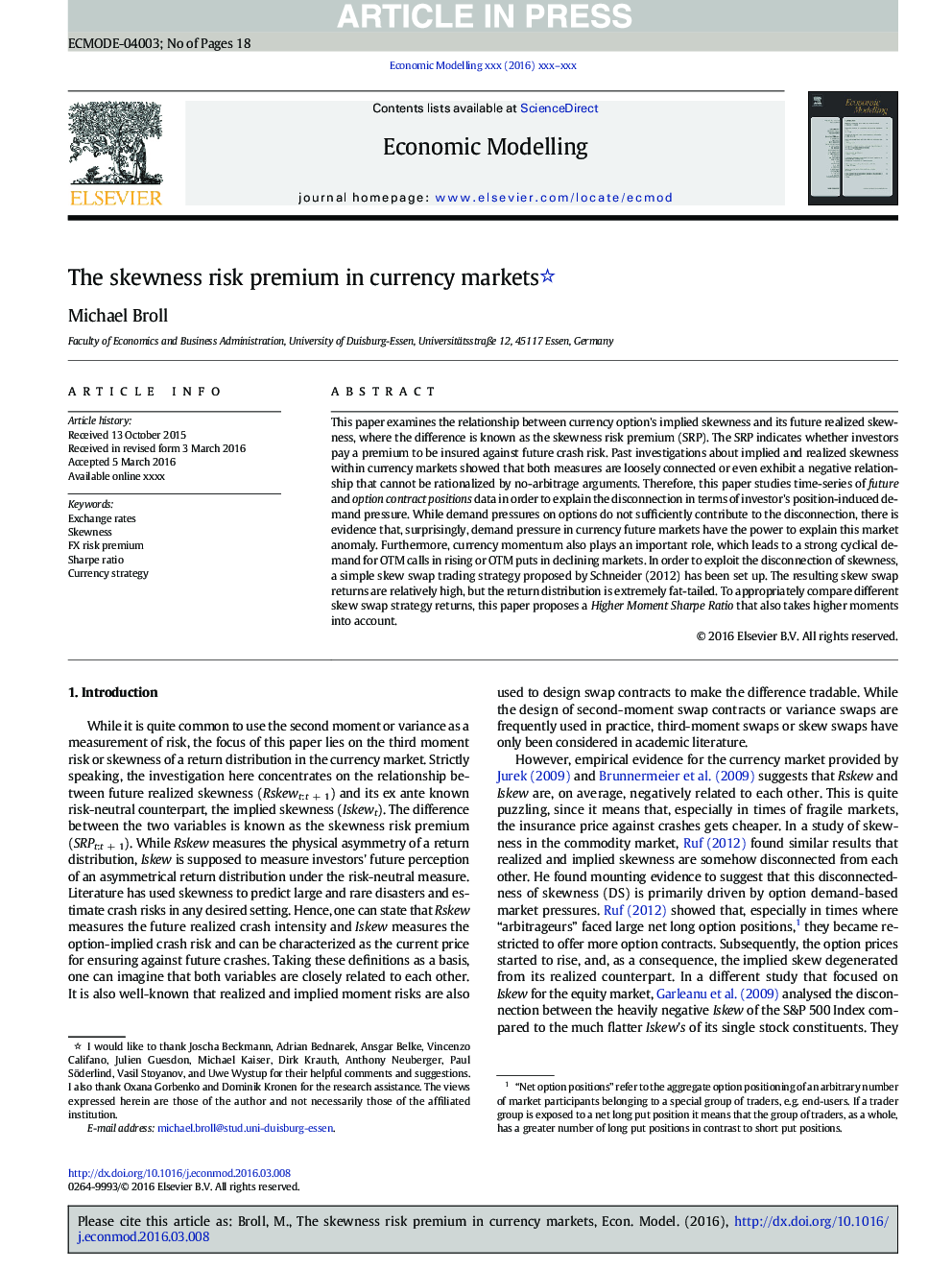| Article ID | Journal | Published Year | Pages | File Type |
|---|---|---|---|---|
| 5053500 | Economic Modelling | 2016 | 18 Pages |
Abstract
This paper examines the relationship between currency option's implied skewness and its future realized skewness, where the difference is known as the skewness risk premium (SRP). The SRP indicates whether investors pay a premium to be insured against future crash risk. Past investigations about implied and realized skewness within currency markets showed that both measures are loosely connected or even exhibit a negative relationship that cannot be rationalized by no-arbitrage arguments. Therefore, this paper studies time-series of future and option contract positions data in order to explain the disconnection in terms of investor's position-induced demand pressure. While demand pressures on options do not sufficiently contribute to the disconnection, there is evidence that, surprisingly, demand pressure in currency future markets have the power to explain this market anomaly. Furthermore, currency momentum also plays an important role, which leads to a strong cyclical demand for OTM calls in rising or OTM puts in declining markets. In order to exploit the disconnection of skewness, a simple skew swap trading strategy proposed by Schneider (2012) has been set up. The resulting skew swap returns are relatively high, but the return distribution is extremely fat-tailed. To appropriately compare different skew swap strategy returns, this paper proposes a Higher Moment Sharpe Ratio that also takes higher moments into account.
Keywords
Related Topics
Social Sciences and Humanities
Economics, Econometrics and Finance
Economics and Econometrics
Authors
Michael Broll,
